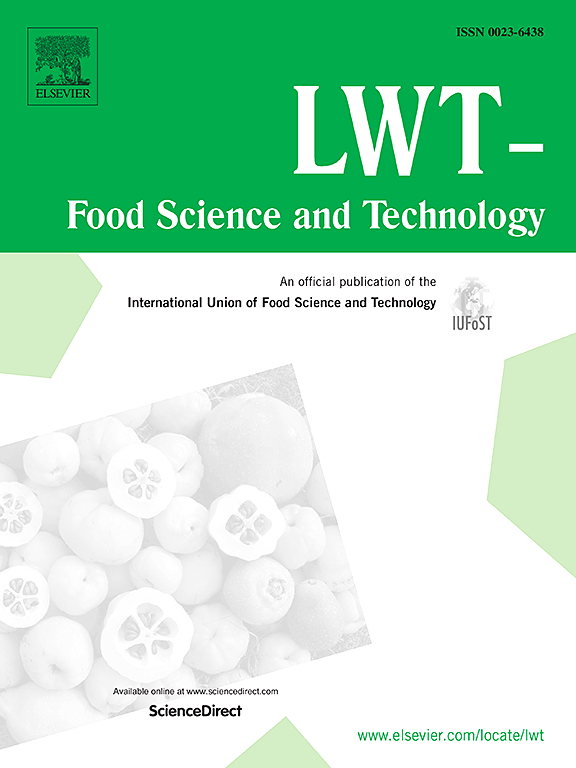Impacts of carbohydrate-based fat substitutes on the textural, rheological, microstructural, and sensory characteristics of low-fat processed cheese
IF 6
1区 农林科学
Q1 FOOD SCIENCE & TECHNOLOGY
引用次数: 0
Abstract
The direct reduction of fat leads to a deficiency in cheese quality. In the present study, an investigation was conducted to explore the effects of six carbohydrate-based fat substitutes with 50 % addition on the physicochemical, textural, rheological, and microstructural properties of processed cheese, which was carried out in comparison with full-fat (FFT), half-fat (HFT), and lowest-fat (LFT) processed cheese. The results demonstrated that all the fat substitutes exhibited remarkable thermal stability, and their water hold capacity/gel strength ranged from 91.34 %/60.79 gf to 97.92 %/136.61 gf, with the highest values corresponding to the carrageenan-potato starch emulsion gel (CPS). Importantly, the fat content of processed cheese containing those fat substitutes decreased from 25.06 % to within the range of 19.50-18.90 %. When compared with HFT and LFT, the addition of fat substitutes led to a reduction in hardness/chewiness, but enhanced adhesiveness/gumminess, making the texture more similar to that of FFT. Similar trends were observed in the rheological properties as indicated by the storage modulus and loss modulus. Meanwhile, the observation of microstructure revealed that the fat substitutes were evenly distributed within the protein networks like milk fat globules, thus compensating for the texture defects caused by fat reduction. Additionally, the sensory evaluation demonstrated that the fat substitutes significantly reduced the characteristics of hardness, chewiness, and elasticity, while enhancing the viscosity. Among which, CPS performed successfully. These findings imply that carbohydrate-based fat substitutes could serve as viable alternatives to fat in processed cheeses, thereby facilitating the development of low-fat products.

求助全文
约1分钟内获得全文
求助全文
来源期刊

LWT - Food Science and Technology
工程技术-食品科技
CiteScore
11.80
自引率
6.70%
发文量
1724
审稿时长
65 days
期刊介绍:
LWT - Food Science and Technology is an international journal that publishes innovative papers in the fields of food chemistry, biochemistry, microbiology, technology and nutrition. The work described should be innovative either in the approach or in the methods used. The significance of the results either for the science community or for the food industry must also be specified. Contributions written in English are welcomed in the form of review articles, short reviews, research papers, and research notes. Papers featuring animal trials and cell cultures are outside the scope of the journal and will not be considered for publication.
 求助内容:
求助内容: 应助结果提醒方式:
应助结果提醒方式:


